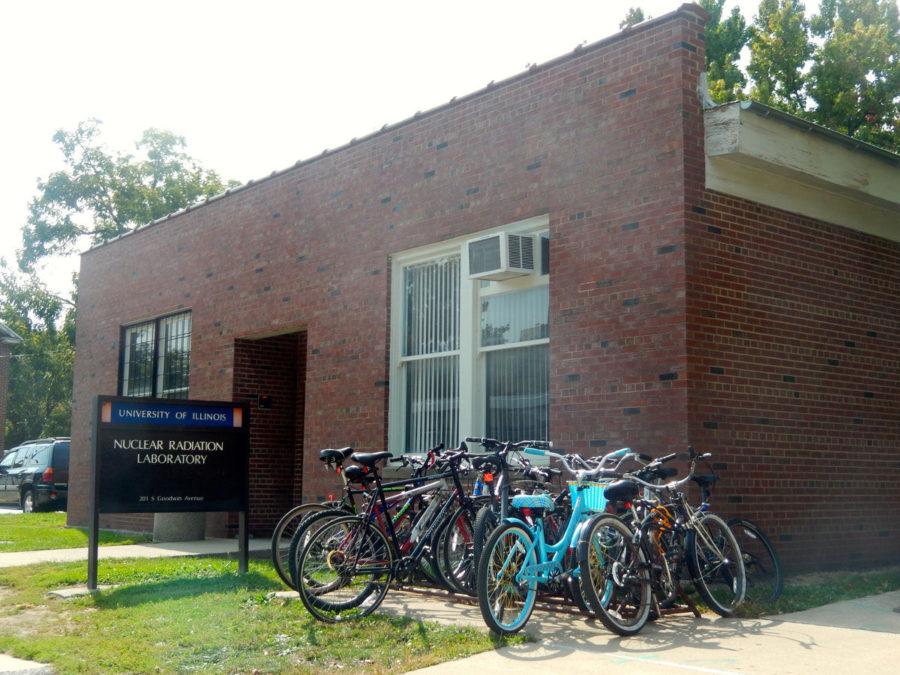University receives free fusion device from German institute
A plasma/fusion advanced physics testing facility will arrive at the Nuclear Radiation Lab at the University in five to six weeks.
October 1, 2014
The recent acquisition of a plasma/fusion advanced physics testing facility at the University will continue to open new opportunities for research on campus.
The Nuclear Radiation Laboratory on Goodwin Avenue is currently preparing to receive the dismantled fusion device in approximately five to six weeks, according to University professors. The device has been named the Hybrid Illinois Device for Research and Applications.
Daniel Andruczyk, assistant professor of Nuclear, Plasma and Radiological Engineering and director of the Center for Plasma-Material Interactions at Illinois, will oversee research conducted with the device.
The HIDRA was given to the University by the Max Planck Institute for Plasma Physics, a German institute where it was previously known as WEGA. It will be only one of a handful of fusion devices in the U.S., according to Andruczyk. He said the machine should be operational in about a year.
Andruczyk has been central to the transfer process and the decision to give the device to the University. He worked on the device in Germany for three years before coming to the University to conduct postdoctoral research.
Get The Daily Illini in your inbox!
When he heard the institute was looking to give away the device to make room for a new, larger plasma device, Andruczyk spoke to Dr. Robert Wolf, director of the Max Planck Institute of Plasma Physics.
He then talked to David Ruzic, professor, Jean Paul Allain, associate professor and Davide Curreli, assistant professor of NPRE about the possibility of acquiring the device. With their support, Andruczyk began the negotiation process to secure the transfer.
“I had to make up a business plan, which explained how the investment to get it here will pay dividends to the University,” Ruzic said.
Ruzic collaborated with several professors, including Andruczyk, to persuade the department of NPRE and the College of Engineering to fund the transportation and the reassembly of the device, which cost the University about $1 million, according to Ruzic.
He said HIDRA and another hybrid device at Auburn College are the only two in the world that have the capability to function both as a tokomak and a stellarator, which Andruczyk explained as being, “two different ideas on how to contain plasma.”
“The really unique thing about HIDRA is that we’re really going to be focusing on the materials aspect of fusion,” Andruczyk said. “And that’s the big thing that needs to be solved in fusion.”
Ruzic will be one of several professors to conduct research on the device.
The type of research the University will be conducting with the device will be different from what the device has been used for in the past. Instead, it will devote this machine to uncovering how plasma interacts with materials, which is something that has never been done before, according to Ruzic.
According to the team, this type of research will be unique for this facility and put the University on the map for plasma research.
The new device may also attract students to the University who want to be involved with the device.
Andruczyk said the device has already sparked interest outside the University from people and organizations, who wish to collaborate and test ideas with the device.
Outside parties would be able to pay to use the device, and according to Andruczyk, this could be a source of revenue for the University in the future.
“What it really does is it gives us good exposure to the world, that we have a machine like this,” he said. “I think it’s really going to open up a lot of opportunities for us.”
Eric can be reached at [email protected].
Clarification: In a previous version of this article Davide Curreli, assistant professor in Nuclear Plasma and Radiological Engineering, was not included in a list of professors who worked together to bring the device to the University. The Daily Illini regrets the error.







